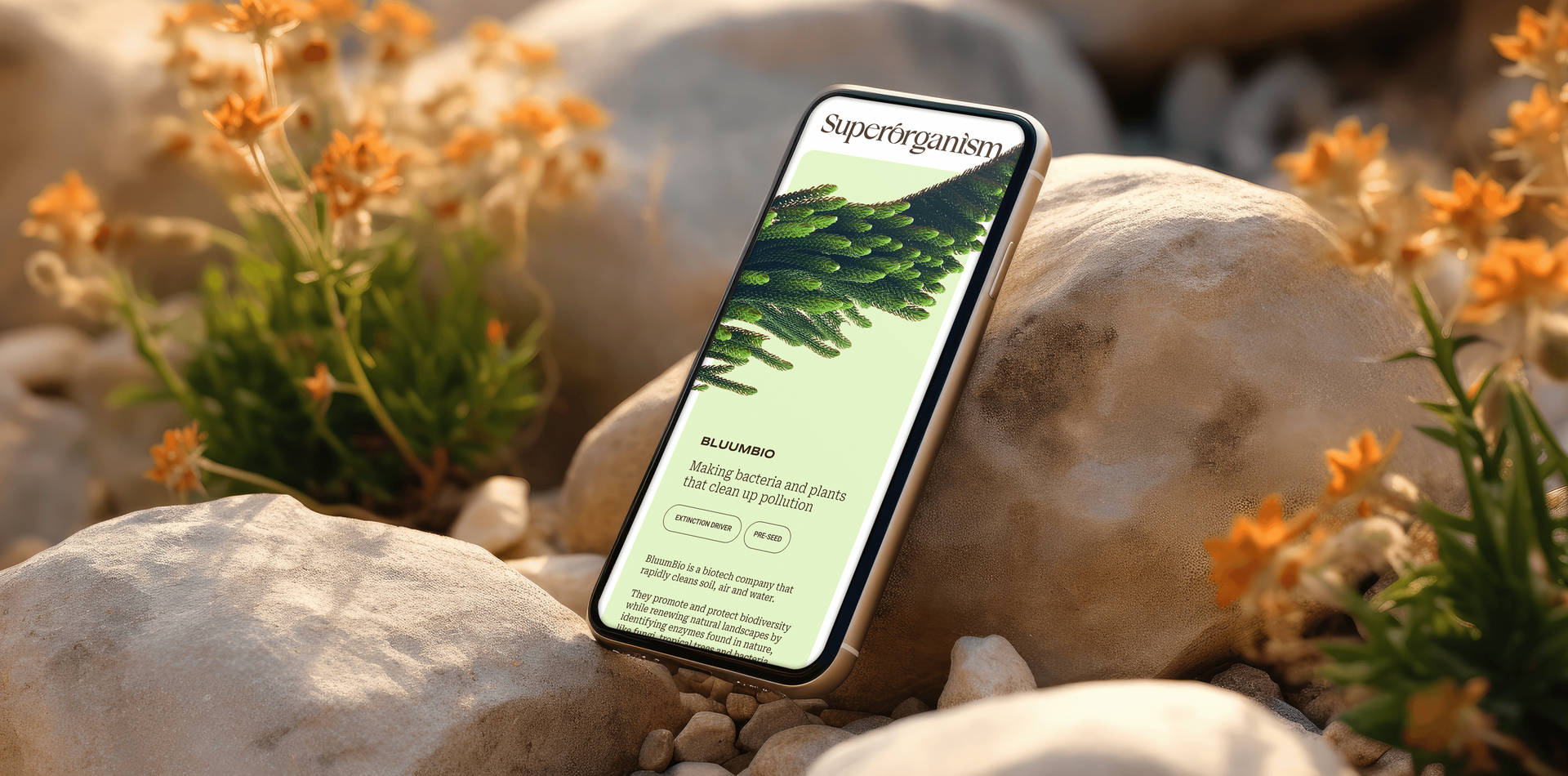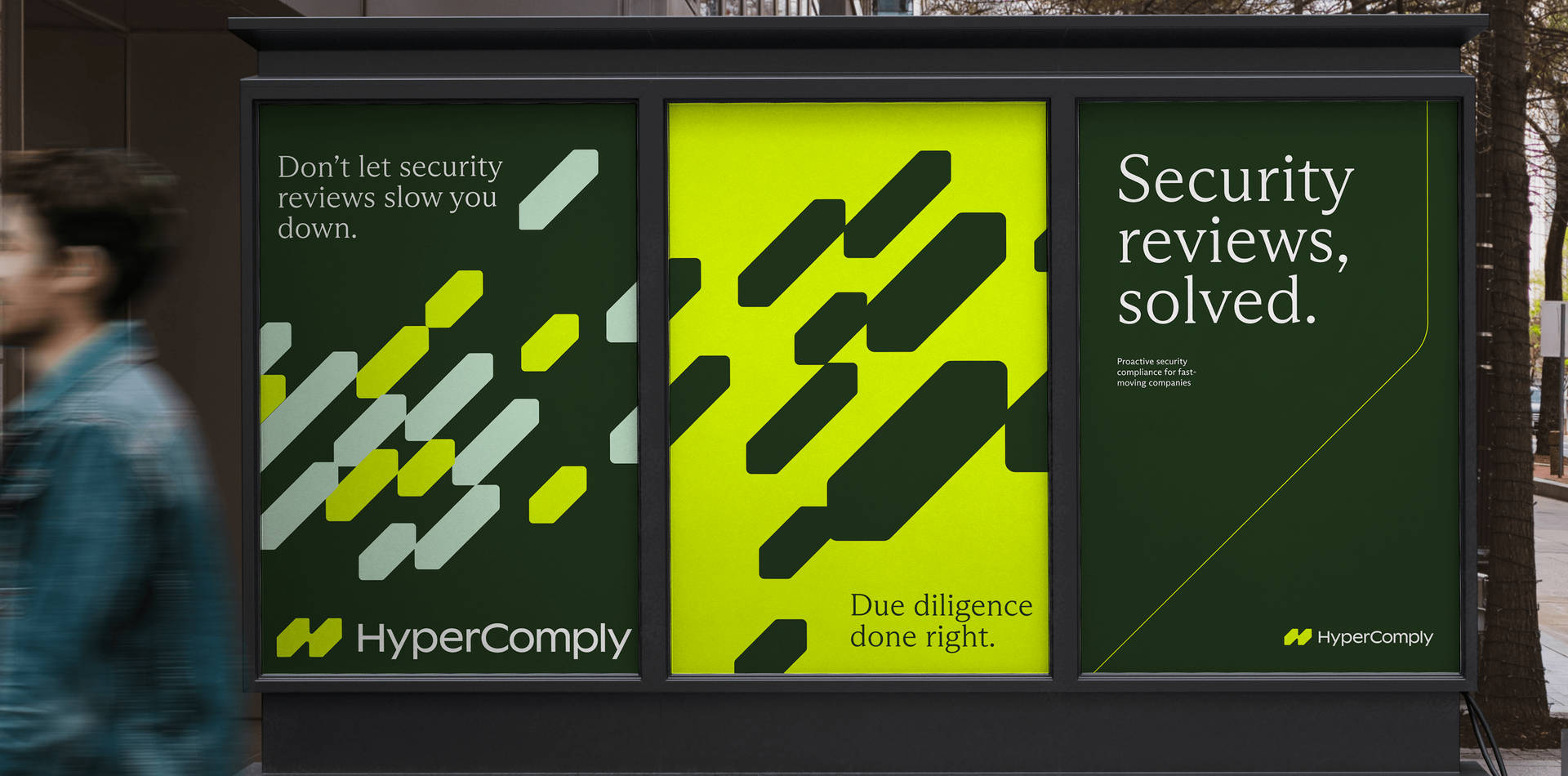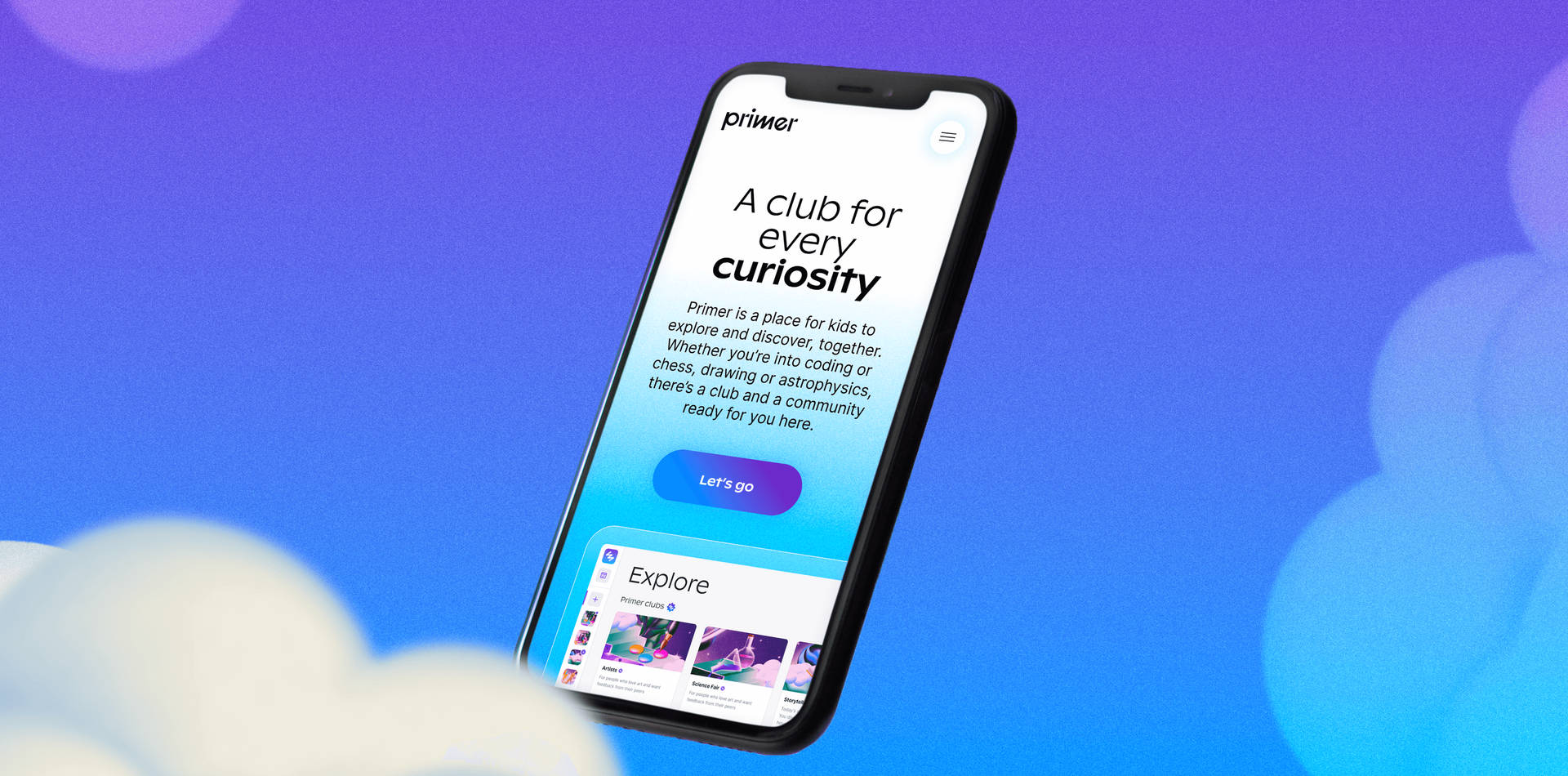Goodside is a full-service brand studio recently founded by Creative Directors, Jessica Strelioff and Danielle LaRoy. With their vision to build brands for purpose-driven companies that not only ‘look good’, but also ‘sound good, and do good’, the name Goodside felt like a natural fit. They tell us, “it’s a reflection of the optimism we bring to every project and our belief that every company and every story has a good side.”
The idea to start a studio of their own came after working in-house for big tech companies, together on the agency-side and collaborating as independent creatives. Jessica and Danielle, a designer and strategist, respectively, discovered the magical combination of blending the visual and verbal. They’ve found that working together has unlocked their full creative potential. As they tell us: “We developed a way of working that was much more fluid between strategy, design, copy, and art direction. That process became the foundation for Goodside.”
This approach has informed how the two have grown their studio during its first year, too. One of their biggest challenges has been turning down projects for ones that feel right for the studio. With the belief that the best way to shape a brand is to build the verbal and visual together, Goodside specialises in creating full brand systems that stand the test of time. With that in mind, they try to be “thoughtful and intentional” about the people they work with and the work they bring into the world.
We recently talked with Jessica and Danielle, to find out more about the challenges they’ve faced so far in their careers, their experiences setting up a brand studio and advice for anyone thinking of doing the same.

What were your careers before founding Goodside and what led you both to decide to join forces and start your own creative studio?
Our careers have followed fairly parallel paths, which gave us a nice shared foundation for how we think about and approach branding. Having both worked in-house, agency side, and independently, our goal is to pull the best of each model into a new kind of studio. That’s Goodside!
Early in our careers, we worked in-house at tech companies in their hypergrowth stage—Jessica on the brand team at Asana, Danielle in marketing at Dropbox. We learned a lot about the practical side of brand implementation and what it takes to actually use and scale a brand system at a fast-growing company. We gained a lot of empathy for our clients in those roles, and we still try to keep that perspective and pragmatism top of mind in our work today.
We both left tech to join the same agency in San Francisco in 2016. Of course, we became fast friends and great teammates as a natural strategist-designer duo. There we discovered the magic of blending our visual and verbal disciplines into a more cohesive creative process. Rather than abide by the usual handoff protocols where work tends to get tossed over the fence, we developed a way of working that was much more fluid between strategy, design, copy, and art direction. That process became the foundation for Goodside.
After a few years, we left to work independently, and increasingly over time, independently together. After talking about starting a studio together for so many years and polishing our process, we finally formed Goodside to make it official this year.
Where does the name Goodside come from and what ethos is your agency built on? Can you tell us about your experiences of initially founding your own creative studio, how you’ve found clients and what challenges you’ve faced?
Just like we do for all of our clients, we built the Goodside brand ethos we around three core brand tenets: 1. Find the good, 2. Build for good, and 3. Make more good. “Find the good” is a reflection of our belief that every project should start with a solid strategy, finding the special something that makes each client one of one. “Build for good” speaks to the fact that we don’t just design logos or write taglines in isolation, we create full brand systems that can flex and scale over time—which is especially important for our fast-growing, early-stage clients. And lastly, “Make more good” celebrates the idea that we think design and branding can be a force for good in the world. Our focus on purpose-driven companies is a big part of this. With a finite amount of time in the year, we try to be really thoughtful and intentional about the people we choose to work with and the work we bring into the world—always with an eye for the good.
Naming our studio was by far one of the hardest things we’ve done; it’s high stakes to brand a brand studio! It took a lot of soul searching and *a lot* of Google searching, but when we came up with Goodside, it was a definite aha moment for us. It has the yes-and positive energy we aim to bring to every project and interaction, and it has a natural warmth to it. The name comes from seeing things (brands, ideas, cultural moments) in their best light. Seeing their good side and illuminating that magic for everyone else to see, too.
“Naming our studio was by far one of the hardest things we’ve done; it’s high stakes to brand a brand studio! It took a lot of soul searching and *a lot* of Google searching, but when we came up with Goodside, it was a definite aha moment for us.”
So far, running Goodside has been a total blast. We feel very lucky that all of our clients have found us by word of mouth, especially during this weird recession-ish climate. The biggest challenge has been holding space for the right clients, which means turning down projects that aren’t the right fit. We’re still establishing ourselves, so clients don’t always come to us in need of both the visual and verbal side; some come with their strategy already baked or have plans to do their design in house. We really specialize in weaving the two together, so we’re very conscious of prioritizing projects that need both and passing on projects that don’t. Sometimes that means having to say no to really cool projects with very kind people, and that’s never easy!
Can you tell us about a project that you’ve recently worked on and why it’s important to you?
We just launched the new brand for a biodiversity-focused venture capital firm called Superorganism, and in our 7 years of working together, it very well could be our favorite. From the moment we got the brief and met the founders, it checked all of our boxes—great people looking to build a bold brand for a purpose-driven venture. Check, check, and check.
Superorganism is the first venture firm for biodiversity, which means they invest in seed-stage startups working to reverse extinction drivers and create an abundant world of species and ecosystems. This intersection of environmentalism, investing, and technology made for some really exciting dynamic tensions at the heart of the brand. Ultimately, we delivered an identity that embraces the wild wonder of nature, inviting organisms to break free of their bounding boxes and inspire the kind of unexpected exchanges that drive Superorganism and the whole world forward.
If you want to read more about the project, check out our case study and our in-depth look behind the brand.
Can you tell a bit about your studio process merging the verbal and visual?
When we look around, the brands we’re most inspired by are the ones with a deep sense of self. You can feel it in the way the brand looks and speaks, and the way they move about the world. These are the kinds of brands we set out to create with Goodside—brands that feel full of life and authentically themselves.
“When we look around, the brands we’re most inspired by are the ones with a deep sense of self. You can feel it in the way the brand looks and speaks, and the way they move about the world.”
We believe those brands are built on a solid strategic foundation, so we always start there. Our process begins with a deep discovery phase where we get to know our clients, their audience, and the landscape around them. Lots of research and discussion during that phase allows us to form a point of view and articulate it through our brand positioning.
Building on that foundation, we move into the identity phase, which is where the visual-verbal magic really comes together. We collaborate closely to craft holistic brand directions where our imagery and messaging reinforces and elevates one another. In practice, that process looks like two Figma cursors bobbing and weaving in close quarters for the duration of the identity phase. That, along with lots of what-if’s and how-about’s passing back and forth between copy and design. In the end, blending our two disciplines together means we can make the most of what we say, how we say it, and how it makes people feel on an emotional level—and that’s where things get really exciting.
What are the biggest challenges you’ve faced during your career as women and how have you overcome them?
Both of us are pretty genuinely positive people. We smile a lot, we laugh a lot, and we love being women! But sometimes, that’s its own challenge. Especially early on in our careers, being a young woman meant fighting to have your voice heard and your ideas taken seriously.
No one climbs the career ladder alone, so the first step in overcoming that challenge was surrounding ourselves with the right people. We were both very lucky to have extremely badass women as mentors and managers. These women made space for us at the right tables, gave us opportunities to shine, and really championed us at every turn. It can’t be overstated how deeply impactful that can be on both your confidence and your career. And decades later, these women continue to open doors for us today.
We also don’t shy away from being ourselves authentically, and that’s something of a superpower as a woman. Being ourselves instead of pretending to be edgy or moody creative types has allowed us to attract the right kind of clients for us: kind people doing great things.
The last thing we’ll say on this is that all work is personal, but especially this work; branding is all about introspection and self realization, so we’ve worked hard to form a clear sense of self for Goodside rooted in our beliefs and values. We’re pretty candid about the kind of work we do and don’t do, who we want to do it with, and why we do this at all. Forming that clarity in your own career is powerful stuff because it’ll help you to not only overcome challenges, but avoid encountering some altogether.
“We’re pretty candid about the kind of work we do and don’t do, who we want to do it with, and why we do this at all. Forming that clarity in your own career is powerful stuff because it’ll help you to not only overcome challenges, but avoid encountering some altogether.”
What do you think are the most important qualities for running and leading a successful creative studio?
We’ve scoured the internet for the right word to describe this quality—multi-hyphenate, generalist-specialist, swiss-army-knife-ishness. Basically, we think it’s vital to be able to do multiple things very well. Jessica is a brand designer and art director, but she’s also extremely web-savvy and has a background in illustration. Danielle is equal parts strategist and copywriter, with a background in consumer psychology and a love for short stories.
To add another layer onto that, as much as being an expert in your creative discipline is important to running a successful studio, it’s equally important to hone your craft as a business owner. New business, in particular, is the lifeblood of any studio, so we’ve made a point of sharpening those skills. We’ve practiced our pitch and refined it together so that we feel confident talking about ourselves, our approach, our work, and, importantly, our pricing. That sense of ease in conversations can go a long way—especially in new business meetings, which can be anything but easy. A business owner mentality also helps in setting boundaries, pushing back politely, and resisting scope creep, which are critical for building a sustainable studio business.
“ New business, in particular, is the lifeblood of any studio, so we’ve made a point of sharpening those skills. We’ve practiced our pitch and refined it together so that we feel confident talking about ourselves, our approach, our work, and, importantly, our pricing.”
Lastly, having a great network of collaborators and nurturing that network has also been critical for us. It uplevels our work to partner with people who are amazing at what they do, so we do it as often as we can.
Statistics show that only 0.1% of creative agencies are founded by women, and the numbers are even smaller for women and gender expansive folks of colour. As a successful creative director and studio owner, do you have any thoughts on how we can counteract this imbalance?
It’s worth first acknowledging that this doesn’t just fall on the shoulders of women, gender expansive folks, or people of color. If you want to correct the imbalance in studio leadership, you can help correct it from whatever position of power you sit in.
With that said, we think generosity—and thoughtfulness about how you extend that generosity—can go a long way. Because there’s this scarcity of people like us running studios, it’s easy to look around and feel like we’re all in competition against one another. Fight that feeling! In an industry where gatekeeping is all too common, we try to approach the industry with a collaborative, all-for-one, one-for-all energy. Because life is long, karma is real, and a rising tide really does lift all boats.
A few areas where this comes up most often: be generous about referring out work and thoughtful about who you send it to. Be generous when there are opportunities to partner and thoughtful about who you bring on. Be generous in advocating for others and thoughtful about who you highlight (ahem, designers-to-follow on Twitter lists). Be generous and be thoughtful in general, and we’ll all be better for it.
What advice would you give to women and gender expansive creatives who aspire to found and run their own creative studio?
Have a nest egg: this gives you room to take on projects that are more aligned with your goals (and say no to projects that aren’t), which will build your portfolio and ultimately attract more of the right clients.
Find a great creative partner: for us, working together has been a huge creative unlock. Find someone that you feel safe to take creative risks with, who will give you honest feedback, support, and push you to be the best you can be.
“Find a great creative partner: for us, working together has been a huge creative unlock. Find someone that you feel safe to take creative risks with, who will give you honest feedback, support, and push you to be the best you can be.”
Be reliable and do your job well: that alone will make you stand out. It’s rarer than you’d think.
Build your business around the life you want to live. There’s so much freedom in running your own studio—you can set your own hours, your own pay, choose what projects to take, what kind of partners to bring on, etc. Think through your priorities and if you have a partner, be sure you’re aligned on them.
“Build your business around the life you want to live.”
Visit:
Follow:
- Instagram: @goodside_studio
- LinkedIn: @goodsidestudio















